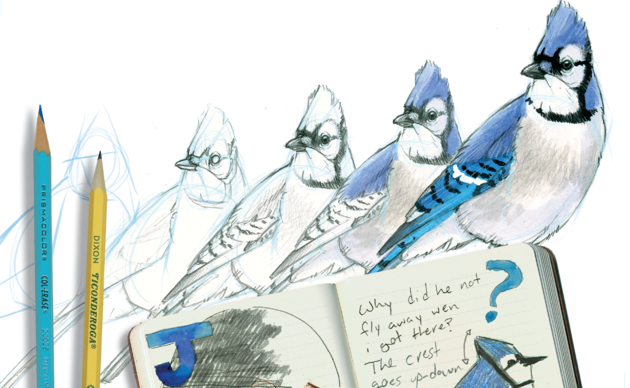Tricolored Blackbird
The Tricolored Blackbird is North America's most colonial landbird. Found almost exclusively in California, its breeding colonies can teem with up to 25,000 birds, sometimes all settled into a single 10-acre field or wetland to raise their young. While similar to the more widespread Red-winged Blackbird, the Tricolored Blackbird is distinguished by its red shoulder patch with a bright white bar.
In the 19th Century, Tricolored Blackbird flocks were described as numerous. Since then, the population has declined from several million to approximately 145,000 today. Over just the last 6 years, the Tricolored Blackbird population has decreased by 44%.
The reasons for this decline are many, but the loss of marsh and nearby foraging habitats along the coast and in the Central Valley is the main issue. In more recent years, the species has become dependent on agricultural lands, with most of the largest colonies nesting in wheat fields. A real dilemma develops because Tricolored young typically have not yet left the nest before the time farmers harvest their crop, and harvesting destroys Tricolored Blackbird nests and young. In some cases as many as 20,000 nests have been lost in a single field.
Collaborative Conservation
Audubon California is working closely with landowners and its partners in the Tricolored Blackbird Working Group to protect this species across California. The Tricolored Blackbird Working Group is a collaborative alliance of farmers, agricultural associations, governmental agencies, researchers, and conservation organizations that have all recognized the importance of a multi-faceted and cooperative approach to promote the long-term persistence of the Tricolored Blackbird. The Working Group strives to reverse the population decline of this species, and increase the population to more than 750,000.
The efforts of the Working Group are guided by the Tricolored Blackbird Conservation Plan that lays out a strategy to boost populations through long-term conservation planning and short-term action-oriented intervention. Specifically, the Plan commits stakeholders to implement: (1) habitat conservation projects to benefit the species; (2) a research program to more thoroughly understand the species' life history; (3) a monitoring program to effectively document population trends and distribution; and (4) an outreach and education program to enhance public and private landowner awareness, and to build public support for conservation.
Central Valley Working Lands
By partnering with landowners, we can create lasting protections for birds.
How you can help, right now
Get Audubon CA in Your Inbox
Our newsletter is fun way to get our latest stories and important conservation updates from across the state.
Donate to Audubon
Help secure the future for birds at risk from climate change, habitat loss and other threats. Your support will power our science, education, advocacy and on-the-ground conservation efforts.
HOTSPOT: Flyover of California's Birds and Biodiversity
California is a global biodiversity hotspots, with one of the greatest concentrations of living species on Earth.





